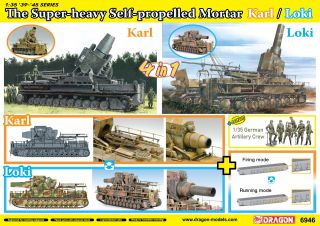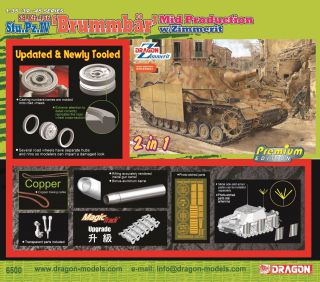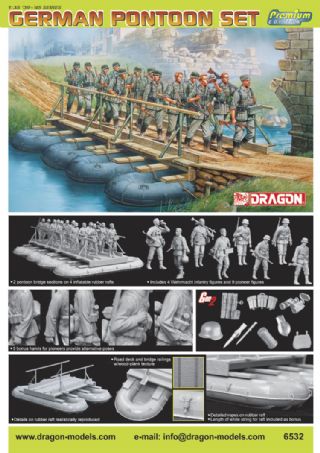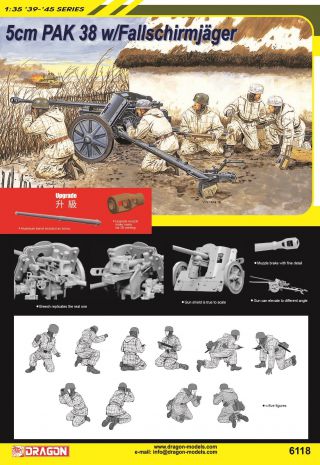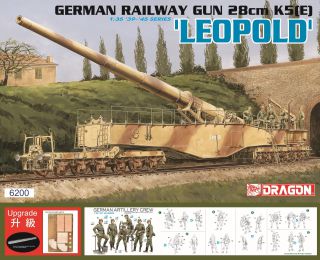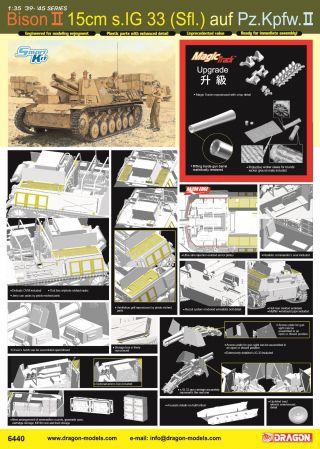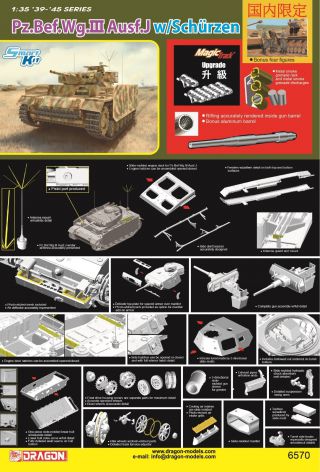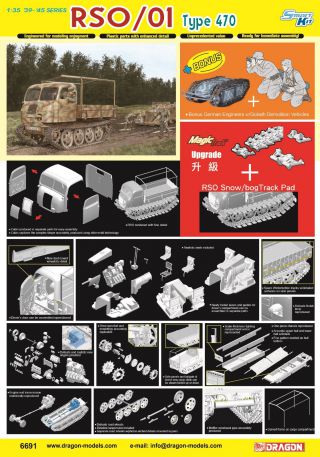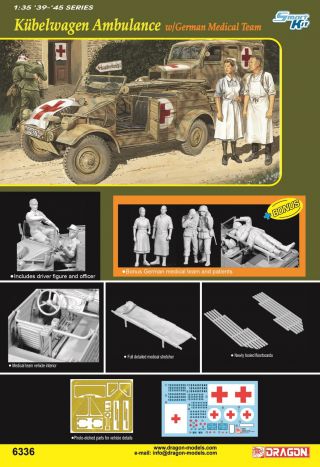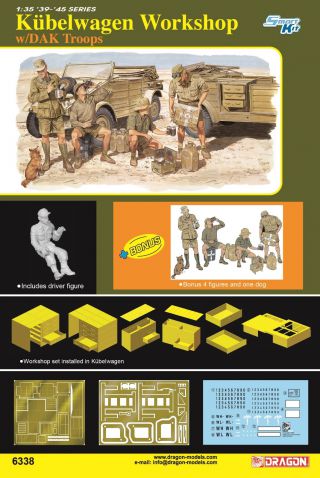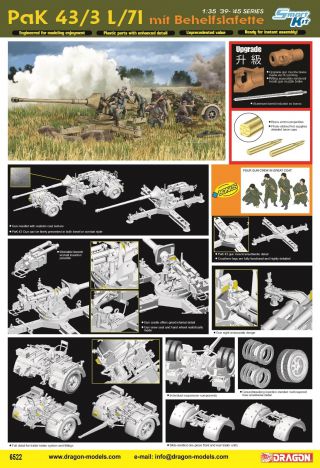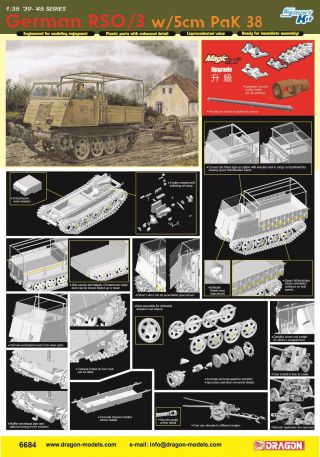HOME → Dragon Plastic Model Kits → 1/35 WWII Military → 6575 → REVIEW
Pz.Kpfw.IV Ausf.J Latest Production
Manufacturer: Dragon models
Scale: 1/35
Material: Styrene & PE
Serial Number: 6575
Price: TBA
Introduction
It's seems almost unnecessary to introduce the Panzer IV, Dragon having already released so many versions over the last few years...so I'll keep this brief. As everybody knows (probably) the Panzer IV became the workhorse of the German armed forces during WWII, although it was never intended to be so. As a result of it being the only German yank to be manufactured throughout the entire war, it was subject to a series of upgrades and adaptations to maintain its effectiveness. This model is of a last production Ausf.J, the very last type to roll off the production line. This version had a number of specific changes from earlier types, not necessarily to increase its effectiveness, but also as a result of the situation that existed at that time, and with hindsight can be seen as a backwards step from the previous Ausf.H version.
Kit Contents
This is one of "those" boxes again. There's a seriously large amount of plastic on this one...seventeen sprues, seven small ones, a transparent sprue, separate lower hull, turret shell, rear turret schurzen, two alternative gun sleeves, decal sheet, large photo-etched fret, and a series of pre-cut wire meshes to use as schurzen.
As alluded to in the introduction, there have been a lot of previous version of Panzer IV's released by Dragon, and it struck me looking through the box that the majority of modellers...or at least the majority of those that read this site...are already very familiar with the general contents of what is in these kits from Dragon. Or are they? Because whilst processing the photographs for this review, I was struck by a number of things I hadn't really noticed before...although I'm almost certain they've been there in other variants Dragon have released. More on that later.
The instructions for this kit run to ten sides, and construction as normal begins with the assembly of the running gear, and then it's installation onto the assembled lower hull. All the usual detail is there, i.e., manufacturers logo on roadwheel tyres, a choice of welded and cast idler wheels (consult your references for which to use), and a new lower hull with three return rollers, since the fourth was deleted on the Ausf.J to save material and weight. At this stage the hull rear wall is also assembled, and instead of the usual cylindrical muffler we're supplied with the two flame suppressing ones, along with the absence of the turret traverse motor of course. Moving back to the running gear, the tracks supplied with this kit are thankfully, the Magic Track ones, in two bags, each a slightly different shade of grey to help distinguish them during assembly. Each of the links does have two small ejector pin marks on their lower surface that will need to be carefully removed, but at least they stand proud rather than recessed so they're easy enough to remove. There's a choice of parts between injection moulded and photo-etched when it comes to the brackets for the spare track links on the glacis, and holes to be complete if you choose to use the former. Each of the two fenders has tread detail moulded on both upper and lower surfaces, with separate front and rear mudflaps.
Moving to the engine deck, there are photo-etched louvres supplied, along with injection-moulded ones, so you again have a choice to make. Construction then begins on the superstructure, the main deck of which is supplied in one part, with separate side panels to attach. Although internal detail is at a minimum, such things as the co-driver's Mg is supplied fully detailed, so that if you do decide to leave hatches open, then there's something there to be seen. As with all the Panzer IV variants, the fenders are absolutely choc-full of stowed equipment and tools. Al the tools supplied for this purpose are of the 'Smart' series variety, i.e. detailed clamps moulded in-situ. The close-off panels on the engine air-intakes are supplied as plastic or photo-etch, and a few tings, such as the jack block and towing clevises are supplied with some photo-etched details to add to their appearance.
The turret shell is provided as a one-piece, slide-moulded part, minus the vision and pistol ports that were deleted on this version. The commander's cupola is a small model in itself, such is the level of detail, with clear inserts to provide the periscopes, and a hatch fully detailed on both surfaces. The main gun has a fully-detailed breech assembly, along with a choice of two lower gun sleeves and four different muzzle brakes, so either go with the first choice offered, or select which is most appropriate to the version you're modelling from your references. For the turret roof there's a fully detailed Nahverteidigungswaffe or close-in defence weapon supplied, but on nearly all of the last production variants this was just closed off with a blanking plate since the weapon was in short supply. Dragon supplies the blanking plate as an alternative part. It almost (but not quite) goes without saying that all the hatches are supplied with full detail on their inner surfaces for displaying in an opened position. There are also two roughly quadrant-shaped photo-etched mesh panels for fixing between the rear of the turret and the turret schurzen that provided a stowage space.

